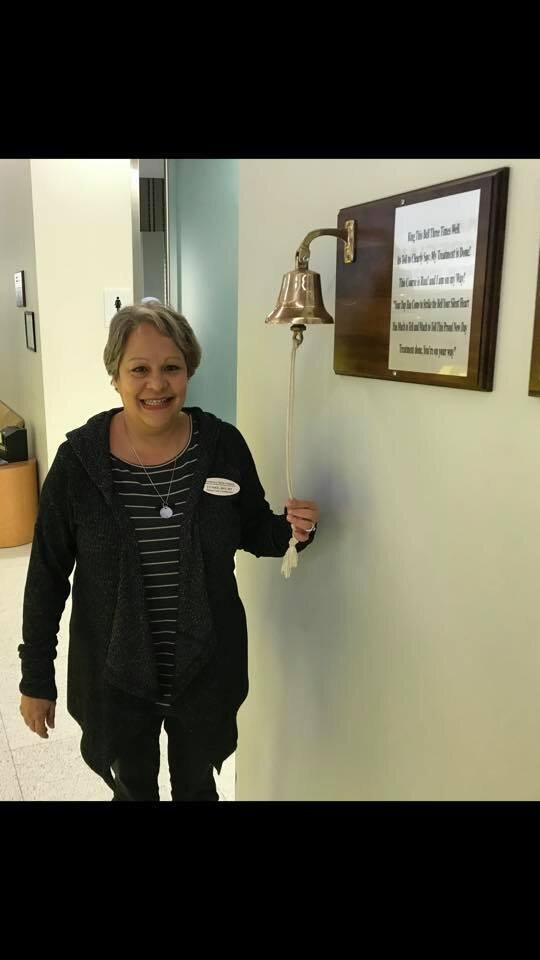An Ovarian Cancer Survivor Story: Lyndee Taylor
My name is Lyndee Taylor, and I am an Ovarian Cancer Survivor
For the last 20 years of my life, I have worried about cancer, specifically breast cancer. My mom was diagnosed with breast cancer in 2000. She had a lumpectomy and radiation. I remember her doctor telling us four girls, “there is a 50% chance that 1-2 of you girls will also have breast cancer.” I feared I would be the one. I began the yearly screening process of mammograms thinking I would be prepared. The summer of 2014, my younger sister found a breast mass. She had a mastectomy and began chemotherapy. I believed I would be the next one diagnosed. In June of 2018, I noticed I had abdominal bloating that wouldn’t go away. A week later, I made the decision to go find out what was causing the bloating. I went to the ER and was seen by a dear friend of mine, Dr. Smotherman. Unfortunately for Dr. Smotherman, she had to tell me that my CT scan looked suspicious for ovarian cancer. WHAT???? I was in my second year of Nurse Practitioner school specializing in Women’s Health. I knew about ovarian cancer, but honestly, how could I have ovarian cancer? My family has breast cancer. No one had ovarian cancer. I had so many questions, and I cried so many tears.
I had debulking surgery which is a procedure to remove as much of the tumor as possible along with the uterus, fallopian tubes, ovaries, omentum, and any cancer lesions seen with the naked eye. I had lesions on my bowel, bladder, omentum, both ovaries, and my diaphragm. I was diagnosed with Stage 3C High Grade Epithelial Ovarian Cancer. 60% of all cases of ovarian cancer are diagnosed when they are Stage 3C. I prayed chemotherapy would get all the little lesions not seen during surgery. I had 6 rounds of chemotherapy and 16 rounds of Avastin (a tumor starving therapy used in colorectal, lung, kidney, cervical and ovarian cancer). I found out both my younger sister and I tested negative for the BRCA gene however, we both tested positive for the BRIP gene which is also linked to both breast and ovarian cancer. By March of 2019, my CT scan revealed no active lesions. I was NED (no evidence of disease). Because there is no cure for ovarian cancer, it is treated like a chronic disease. You live with it while watching carefully for signs of recurrence. For all types of ovarian cancer, 72.4% of women will live for at least 1 year after diagnosis. Almost half (46.2%) are still alive at least 5 years after diagnosis. My diagnosis of Stage 3C HGE has a 5-year survival rate of 39%. I decided not to worry about statistics. I never liked statistics anyway.
Ovarian cancer has a high fatality rate because there is no good screening test available. Unlike breast cancer, which can often be detected early with mammograms, ovarian cancer patients are often very advanced at diagnosis. A PAP SMEAR does not screen for ovarian cancer. Generally, epithelial ovarian cancer grows rapidly and presents as advanced disease at the time of diagnosis because patients do not experience symptoms in the early stages. Because ovarian cancer is so hard to detect in the early stages, I jump at the chance to educate women of all ages about the signs and symptoms of ovarian cancer. I have adopted the saying “if you have/had ovaries, you could get ovarian cancer.” Yes, you can still develop ovarian cancer without ovaries. Know your body!
www.Normaleah.org uses the word BEAT
Bloating that is persistent
Eating less, feeling fuller
Abdominal and/or back pain
Trouble with your bladder and bowels
If any of these symptoms persist more than 14 days, consult your healthcare provider. You may be at risk.
EARLY DETECTION= INCREASED SURVIVAL


